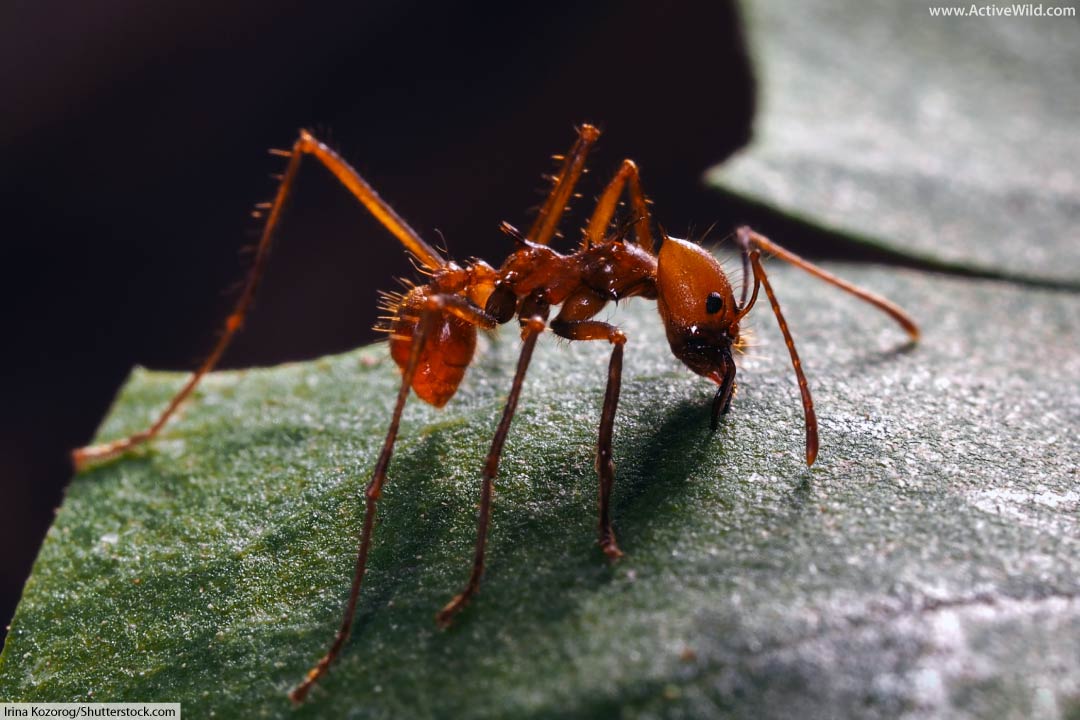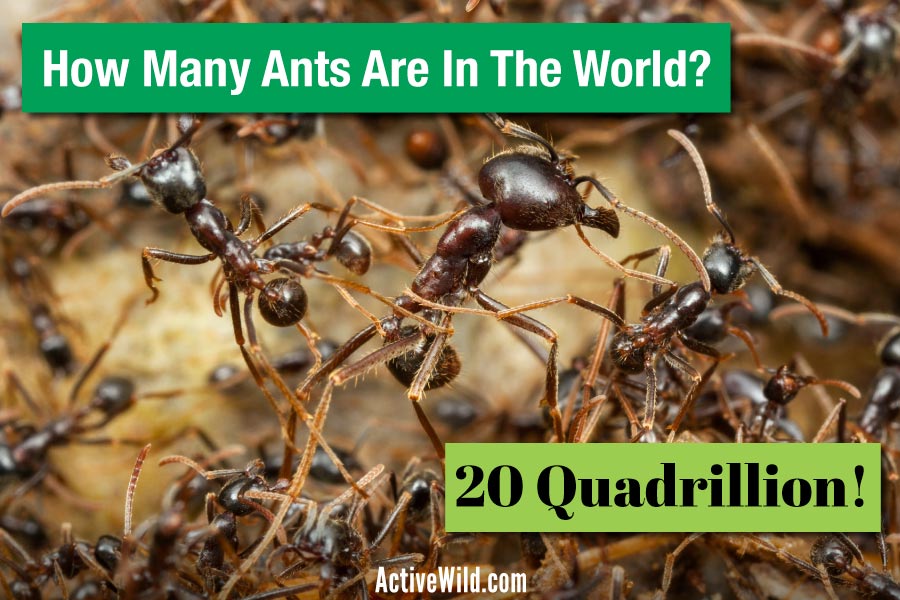Have you ever wondered how many ants live in a typical ant nest, which is a seething mass of activity?
The answer might be in the billions, depending on the species.
You may be tempted to ask, “How many ants are there in the world?” after learning that a large number of ants can live in just one colony.
Scientists from Germany’s University of Würzburg have recently attempted to answer this key question…

How Many Ants Are In The World?
There are roughly 2.5 million ants for every living person today, according to estimates. There are around 20 quadrillion (20,000,000,000,000,000) ants alive today.
The biomass of all wild mammals and birds combined is 12 megatons of carbon, which is 20 quadrillion ants. Ants collectively produce the same amount of biomass as humans do.
How Do You Count All The Ants On Earth?
Patrick Schultheiss et al. at Germany’s University of Würzburg calculated the number 20 quadrillion ants in a research titled “The abundance, biomass, and distribution of ants on Earth,” which is substantially higher than previously estimated.
In a September 2022 paper in the journal The Proceedings of the National Academy of Sciences (PNAS), the team’s results were published.

Naturally, every ant wasn’t counted individually by the scientists. Instead, they looked at 489 existing research on both ground and tree-dwelling ants from around the world, ranging from deserts to rainforests.
Biologists have been collecting thousands of samples to discover species and better understand the insects for decades, studying a wide range of ant communities all around the globe. Ants were counted frequently as part of this research.
The entire number of ants on the planet may now be estimated using this information.
Ant abundance in various environments could now be determined thanks to the information, which was previously unknown. Ants are unevenly distributed across the globe, with two-thirds of the world’s ants residing in tropical forests and savannas, according to research.
How Many Species Of Ants Are There?
The number of ant species is estimated to be between 10,000 and 22,000. There are currently 10,213 ant species described in the Catalogue of Life (source), and thousands more may be discovered.

Ants are not the most species-rich of all insect groups, despite accounting for at least one-third of all insect biomass (there are over a quarter of a million beetle species!).
Ants
Ants belong to the order Hymenoptera, which also includes sawflies, bees, and wasps. They are members of the Formicidae family of ants.
Ants may be found in a variety of environments, from grasslands to forests to deserts to swamps to cities, and even the coldest and highest reaches of our planet.
The fact that there is a term for “ant” in practically every language reveals the vast diversity of ants.
How Do Ant Colonies Function?
Ants are one of the most successful species on the planet, and their sophisticated social organization is responsible for much of their success.
Ant colonies have hierarchical structures. The queen, who is in charge of mating and laying eggs, leads the colony as a whole. Queens are bigger than other ants in the colony and have wings. A queen ant may live for up to 20 years.
The most numerous group in an ant colony is worker ants, all of whom are female. Ants working as workers protect the colony, raise larvae, and seek food perform a variety of tasks. The ants you observe are likely to be worker ants, as far as you can tell.
Drones are the name for male ants. Newly emerged queen ants are mated by drones. After mating, a drone dies after only a week of life. The queen ant then creates a new colony with her partner.
Ants have evolved sophisticated information exchange systems that aid the colony operate more effectively by allowing information to be transferred quickly throughout the colony.
More Than Just A Number
While calculating the number of ants in the globe is a tremendous accomplishment, the information provided by this research on ant dispersion and abundance may be more essential when it comes to improving our understanding of how ants function in their ecosystems.
Insects have long been seen as insignificant due to their tiny size, thus this information was previously unknown. Their influence on our planet, on the other hand, is enormous.
Ants affect a variety of other species. We may be able to assess the health of particular habitats with an enhanced understanding of where ants are found and in what numbers.
Ants reproduce at a breakneck pace, far quicker than other species. From one generation to the next, they produce new ants. As a result, they can be used as indicators for other species and react promptly to environmental changes.
What Roles Do Ants Play In The Ecosystem?
Ants recycle dead animal and plant matter, returning nutrients to the soil, thus enriching it. They play a key role in nutrient cycling. Ants dig tunnels that help aerate the soil and improve water filtering, benefiting not just the earth but also plants.
Ants play an essential part in the distribution of plant seeds because they can move up to 13 tons of soil per year (more than earthworms).
Several non-insect species have become reliant on ants, unable to survive without them. Many bird species, for example, will follow army ants as they stir up leaf debris and consume the insects that seek to flee in Panama’s jungles.
This ant-following behavior evolved six million years ago, according to genetic research, and has steadily become more specialized. The ant swarms are now preventing the birds from surviving. As a result, the ant population’s demise would have an negative impact on the bird population (source).
Ants are more effective than pesticides at protecting crops, according to a new study. Since they were discovered to be more effective at destroying pests and increasing agricultural productivity, the insects have become a more cost-effective and environmentally friendly pest management method (source).
What Do These Findings Mean For The Future?
Scientists now have a better understanding of where ants may be found across the globe, which provides them with new avenues of research.
While ants are adaptable to change, certain species do better than others when it comes to adapting. City-dwelling ant species were better at tolerating higher temperatures than those in the countryside, according to one study looking at the effect that climate change may have on ant colonies. Ants’ life cycle was expected to speed up as temperatures increased, but this was not the case, according to scientists.
Old nests provide shelter to other species that do not construct their own, and some ant species have a rapid turnover of nests. The ants, on the other hand, stayed in their nests for longer as temperatures rose, leaving fewer vacant nests for other species to occupy. It is presently unknown how this might affect the ecosystem as a whole.
